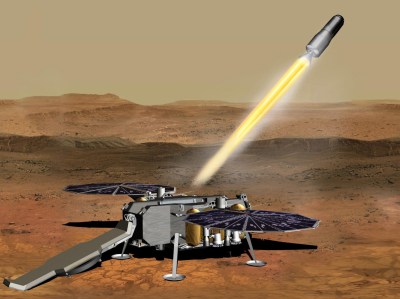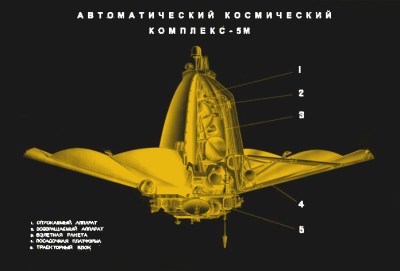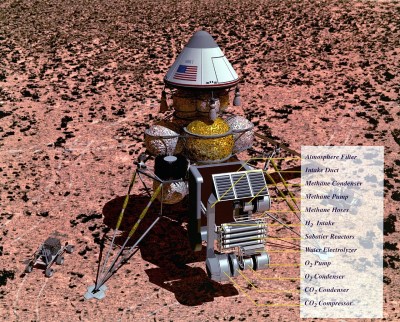
Since NASA’s Mariner spacecraft made the first up-close observations of Mars in 1964, humanity has lobbed a long line of orbiters, landers, and rovers towards the Red Planet. Of course, it hasn’t all been smooth sailing. History, to say nothing of the planet’s surface, is littered with Martian missions that didn’t quite make the grade. But we’ve steadily been getting better, and have even started to push the envelope of what’s possible with interplanetary robotics through ambitious craft like the Ingenuity helicopter.
Yet, after nearly 60 years of studying our frigid neighbor, all we have to show for our work boils down to so many 1s and 0s. That’s not to say the data we’ve collected, both from orbit and on the surface, hasn’t been extremely valuable. But scientists on Earth could do more with a single Martian rock than any robotic rover could ever hope to accomplish. Even still, not so much as a grain of sand has ever been returned from the planet’s dusty surface.
But if everything goes according to plan, that’s about to change. Within the next decade, NASA and the European Space Agency (ESA) hope to bring the first samples of Martian rocks, soil, and atmospheric gases back to Earth using a series of robotic vehicles. While it’s still unclear when terrestrial scientists should expect delivery of this interplanetary bounty, the first stage of the program is already well underway. The Perseverance rover has started collecting samples and storing them in special tubes for their eventual trip back to Earth. By 2028, another rover will be deployed to collect these samples and load them into a miniature rocket for their trip to space.

Just last week NASA decided to award the nearly $200 million contract to build that rocket, known officially as the Mars Ascent Vehicle (MAV), to aerospace giant Lockheed Martin. The MAV will not only make history as the first rocket to lift off from a celestial body other than the Earth, but it’s arguably the most critical component of the sample return mission; as any failure during launch will mean the irrevocable loss of all the samples painstakingly recovered by Perseverance over the previous seven years.
To say this mission constitutes a considerable technical challenge would be an understatement. Not only has humanity never flown a rocket on another planet, but we’ve never even attempted it. No matter what the outcome, once the MAV points its nose to the sky and lights its engines, history is going to be made. But while it will be the first vehicle to make the attempt, engineers and scientists have been floating plans for a potential Martian sample return mission for decades.
Soviet Ambition
America might have gotten a probe in orbit around Mars first, but it was the Soviets who successfully put a lander on the surface in December of 1971. The craft only remained active for a few minutes, but it was still a scientific and political triumph. Looking to establish a commanding lead over the US, Soviet engineers wasted no time in planning an ambitious sample return mission. The first phase, Mars 4NM, would test out core concepts and collect data. This would be followed by the Mars 5NM mission, which would drop a colossal 16 metric ton lander on the planet’s surface sometime in 1976.

The incredible mass of the lander, comparable to NASA’s manned Apollo Lunar Module, was due to the fact that it would contain not only the two-stage rocket necessary to lift the collected soil samples from the Martian surface, but also the 750 kilogram (1,650 pound) Mars-Earth return vehicle and the 15 kg (33 lb) spherical reentry capsule. Thanks to the unforgiving nature of the rocket equation, of that 16,000 kg of hardware delivered to Mars, all Soviet scientists would get back in return was approximately 200 grams of soil.
Unfortunately, the massive N1 rocket that was required to loft these heavyweight missions was never completed. Without a booster powerful enough to lift the Martian vehicles in one piece, a modification was proposed that would use several launches to put the hardware into orbit. Fearing the added complexity would doom the already ambitious mission, plans were scaled back drastically. Hardware for this revised Mars 5M mission was under construction in 1978, but a political change of the wind canceled the project as it was deemed too expensive and risky.
NASA’s Shifting Priorities
While American scientists were certainly just as eager as their Soviet counterparts to get their hands on some fresh Martian samples, NASA was never quite able to get a sample return mission past the early concept phases. The desire was there, but the price tag was simply too high considering all the other programs the agency was supporting through the 1980s.

In fact, plans didn’t really firm up until after the 1996 announcement that scientists believed they had found evidence of ancient fossilized bacterium on a Martian meteorite. Although the theory was later discredited, it did put Mars back in the spotlight. Sample return missions were considered by NASA’s Mars Exploration Program and Jet Propulsion Laboratory, and in 2009 NASA and ESA agreed to work together on the ExoMars program, which was designed to bring Martian samples back to Earth sometime in the 2020s.
But the plan was short lived. In 2012, NASA shocked its international partners by dropping out of the ExoMars program to free up additional funds for the James Webb Space Telescope. Without the considerable funding NASA was set to provide, the entire program needed to be restructured. The ESA ultimately partnered with Russia to continue development of the ExoMars lander and rover, albeit with the sample return capability removed, and the mission is currently expected to launch in late 2022.
One Step At a Time
Even though the ExoMars deal fell through, the United States remained committed to conducting a Mars sample return mission, with the National Research Council’s Planetary Science Decadal Survey declaring it a top priority mission for the 2013 to 2022 time period. So it was no surprise when NASA and ESA resumed talks in 2018 to develop a framework by which Martian samples could be returned to Earth. Rather than trying to tackle the problem with one elaborate mission and spacecraft, it was understood that the two space agencies would jointly work on each phase of the program incrementally. Outfitting Perseverance with the hardware necessary to collect the samples was the first step, and now it’s time to work on getting them off the surface.
Over the years, NASA has proposed several designs for the Mars Ascent Vehicle. The most recent literature describes a 2.8 meter (9 ft) long two-stage booster that burns TP-H-3062, a solid rocket propellant used on several previous Mars landers, with electromechanical thrust vector control (TVC) providing pitch and yaw authority and a monopropellant hydrazine reaction control system (RCS) used to control roll during ascent as well as provide full attitude control of the upper stage while in orbit. The booster is designed to put a 16 kg (35 lb) payload into a 343 kilometer (213 mile) orbit with an inclination of 27°, though the proposal notes that some orbital variation is expected due to the uncontrollable nature of solid rocket motors.
The 2,400 kg (5,290 lb) Sample Retrieval Lander, the largest and heaviest spacecraft to ever touch down on Mars, would carry the MAV horizontally. This arrangement will make it easier for the samples to be loaded into the cylindrical capsule in the nose, and would keep the lander’s center of gravity low. Once ready for liftoff, gas-powered pistons will toss the rocket into the air at a rate of approximately five meters per second. Once clear of the lander, the rocket will ignite its first stage motor and assume a more vertical position as it makes its ascent. This unusual arrangement, which JPL calls Vertically Ejected Controlled Tip-off Release (VECTOR), means the MAV will be able to take off regardless of the orientation of the Sample Retrieval Lander.
After reaching orbit, the MAV will be met by the ESA-developed Earth Return Orbiter (ERO). This spacecraft will use a robotic arm to capture the sample canister and place it into the onboard Earth Entry Vehicle (EEV). Once the cargo is secured it will use high-efficiency ion engines to begin the two year journey back to Earth.
Or at least, that’s the plan. The ERO and EEV are currently in the conceptual phase, and while the designs for the MAV and Sample Retrieval Lander are more fleshed out, Lockheed Martin still has years of work ahead of them before the hardware is ready for flight tests here on Earth; to say nothing of getting packed up and sent off to another planet. There’s an incredible amount of work to be done before we bring a piece of Mars back home, and plenty that can go wrong. But after decades of false starts, it looks like we’re finally on the right track.

0 Commentaires